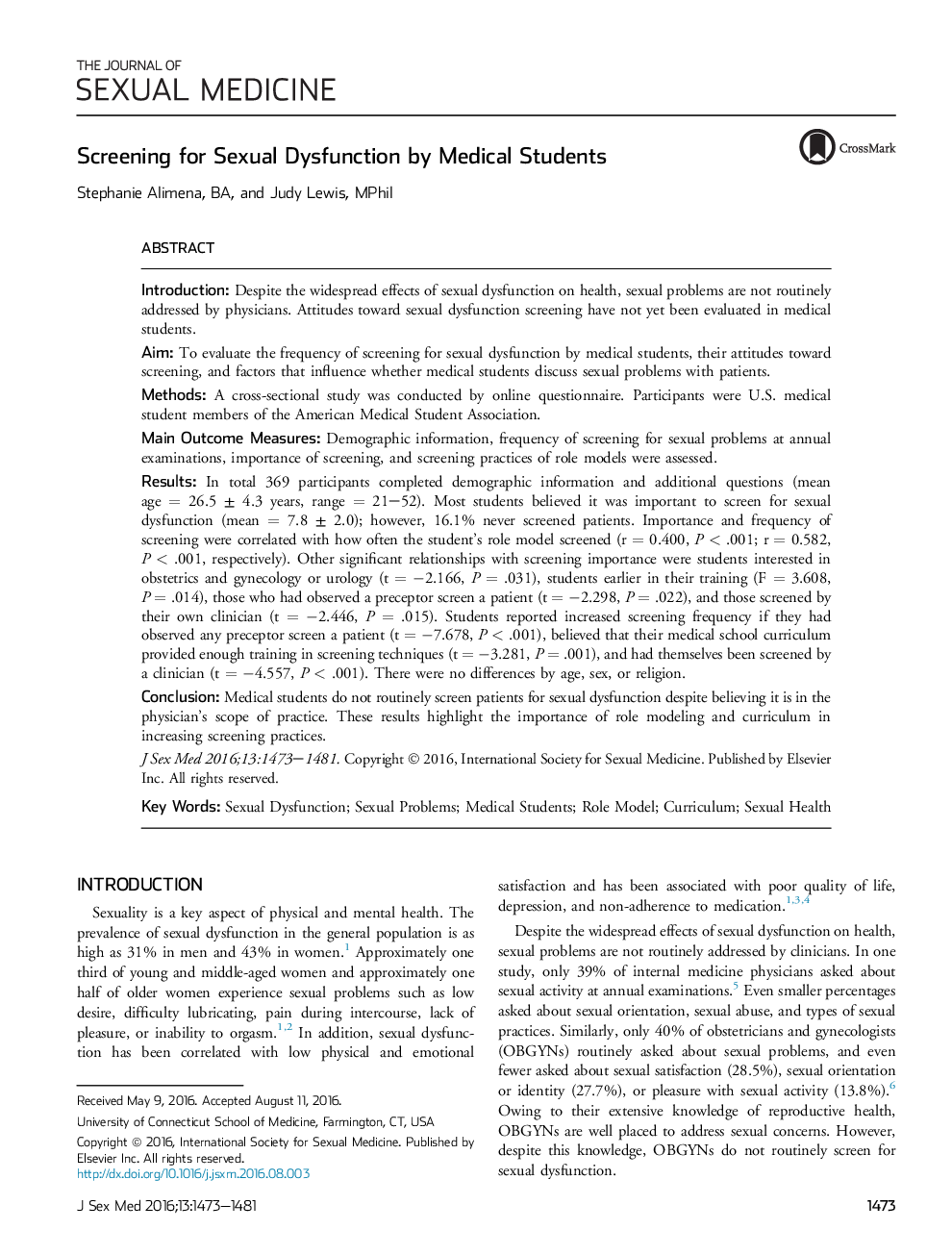| کد مقاله | کد نشریه | سال انتشار | مقاله انگلیسی | نسخه تمام متن |
|---|---|---|---|---|
| 4268950 | 1610827 | 2016 | 9 صفحه PDF | دانلود رایگان |
IntroductionDespite the widespread effects of sexual dysfunction on health, sexual problems are not routinely addressed by physicians. Attitudes toward sexual dysfunction screening have not yet been evaluated in medical students.AimTo evaluate the frequency of screening for sexual dysfunction by medical students, their attitudes toward screening, and factors that influence whether medical students discuss sexual problems with patients.MethodsA cross-sectional study was conducted by online questionnaire. Participants were U.S. medical student members of the American Medical Student Association.Main Outcome MeasuresDemographic information, frequency of screening for sexual problems at annual examinations, importance of screening, and screening practices of role models were assessed.ResultsIn total 369 participants completed demographic information and additional questions (mean age = 26.5 ± 4.3 years, range = 21–52). Most students believed it was important to screen for sexual dysfunction (mean = 7.8 ± 2.0); however, 16.1% never screened patients. Importance and frequency of screening were correlated with how often the student's role model screened (r = 0.400, P < .001; r = 0.582, P < .001, respectively). Other significant relationships with screening importance were students interested in obstetrics and gynecology or urology (t = −2.166, P = .031), students earlier in their training (F = 3.608, P = .014), those who had observed a preceptor screen a patient (t = −2.298, P = .022), and those screened by their own clinician (t = −2.446, P = .015). Students reported increased screening frequency if they had observed any preceptor screen a patient (t = −7.678, P < .001), believed that their medical school curriculum provided enough training in screening techniques (t = −3.281, P = .001), and had themselves been screened by a clinician (t = −4.557, P < .001). There were no differences by age, sex, or religion.ConclusionMedical students do not routinely screen patients for sexual dysfunction despite believing it is in the physician's scope of practice. These results highlight the importance of role modeling and curriculum in increasing screening practices.
Journal: The Journal of Sexual Medicine - Volume 13, Issue 10, October 2016, Pages 1473–1481
